Motorola Droid Bionic Review - Dual Core with 4G LTE
by Brian Klug on October 11, 2011 1:55 AM EST- Posted in
- Smartphones
- LTE
- Motorola
- OMAP 4
- Mobile
- motorola droid bionic
WiFi, GPS, Audio
The Motorola Droid Bionic, like the Droid 3, uses a TI WL1285 wireless combo for WLAN, Bluetooth, and an FM radio, were the Bionic to have an application for it. WiFi range on the Bionic is totally adequate, I can find nothing to fault with this, and we’ve pointed out where the WLAN antenna is on the device. Things are pretty standard here, the Bionic does a good job hopping on and off of my 2.4 GHz 802.11n network, and with my 20 MHz channels I see a link speed of 65 Mbps, which indicates long guard intervals.
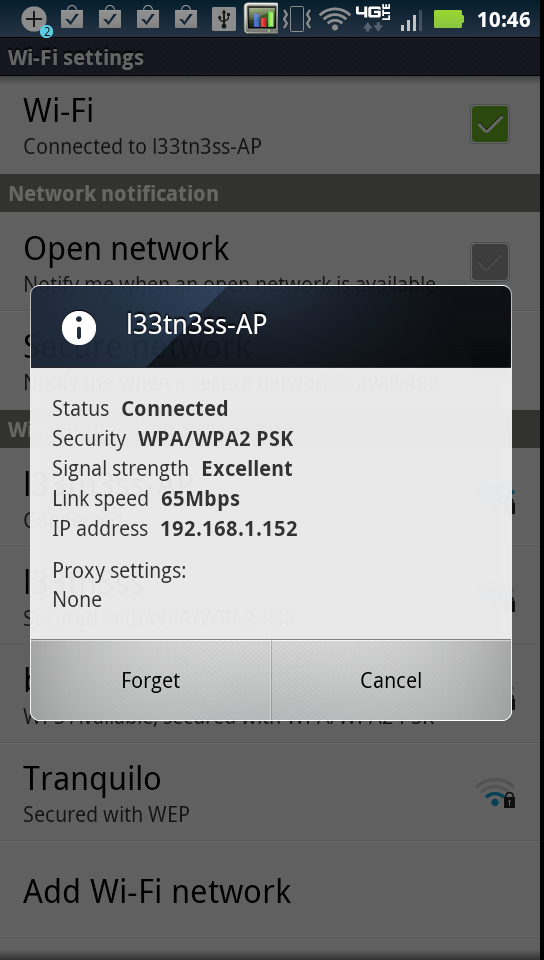
I did the usual thing and ran our local WLAN test which consists of downloading a locally-stored 100+ MB PDF and measuring throughput.
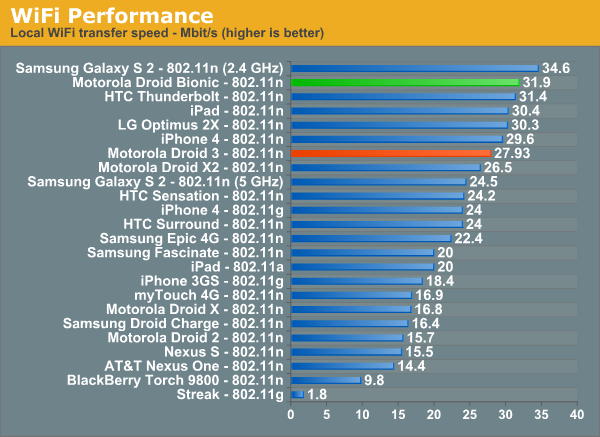
Performance here is on par with and slightly better than the Droid 3.
WiFi Hotspot
The Bionic also includes the requisite WiFi hotspot functionality you’d expect from a top tier smartphone. There are a maximum of five allowed wireless clients that can attach at a time. The software configuration thankfully also allows users to choose what wireless channel the hotspot sits on, and the DHCP server pool’s starting address. You can use WPA2 PSK or no encryption at all.
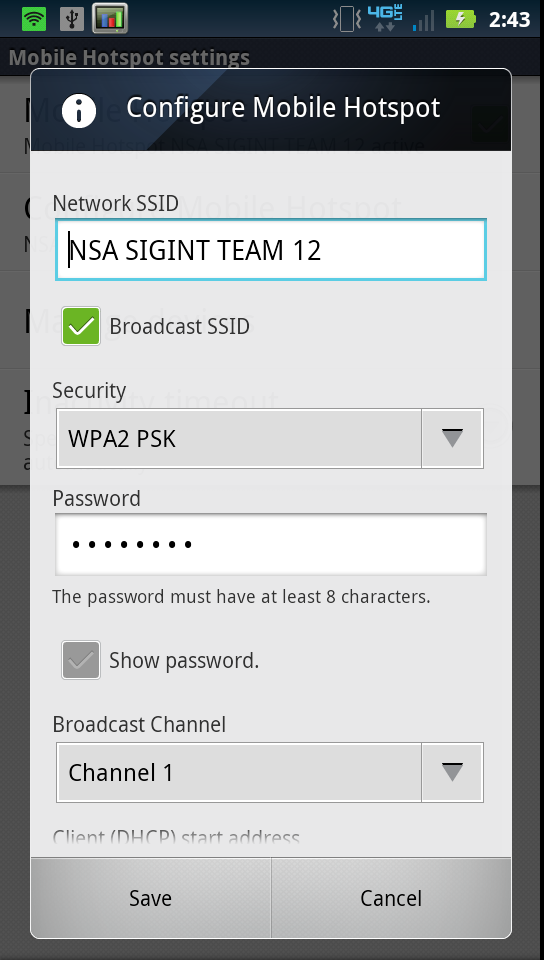
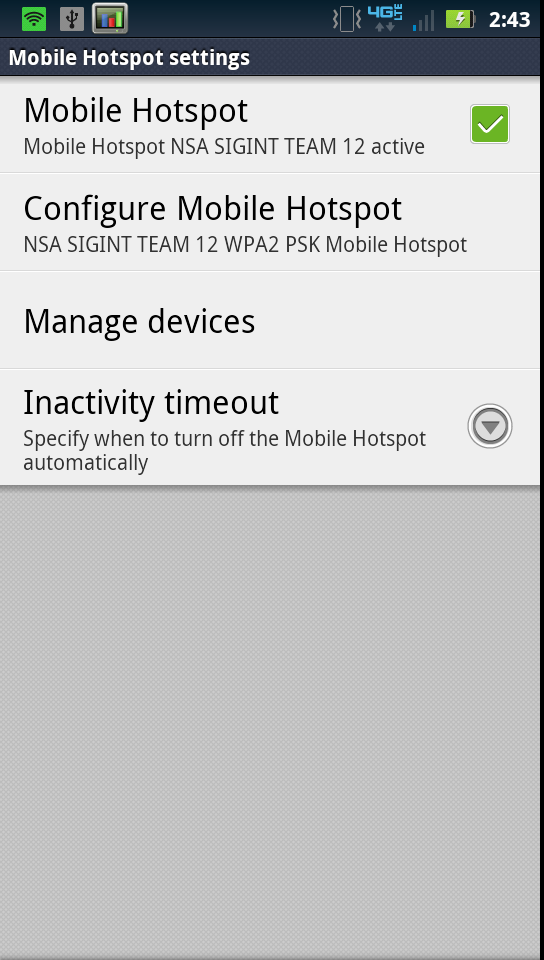
Clients attach and negotiate an 802.11g 54 Mbps link rate at maximum. I did have some initial stability problems with the Bionic when running our WiFi hotspot test, which I eventually tracked again to data saver during those night hours. Other than that, the hotspot works decently well. Just keep in mind that even connected to the charger, heavy WiFi hotspot use can discharge the phone slowly.
GPS
The Bionic uses Qualcomm’s GPSOne onboard MDM6600 and locks very fast and accurately, even indoors. Since Qualcomm’s GPS seems to be somewhat further abstracted away than most, I have a feeling every fix is warm rather than cold which helps speed things along considerably.
I’m impressed with the speed and robustness of the GPS on the Bionic it’s largely the same that I saw on the Droid 3.
Noise Cancelation and Audio
The Bionic, just like the Droid 3, has a total of three microphones. Two on the back of the device, one at the top, one at the bottom, and on the front, the primary microphone at the bottom. The Bionic, like the Droid 3, does some common mode noise rejection to reduce ambient noise when on calls, the result is that the other party in theory hears less background noise even if you’re in a noisy environment.
The Bionic performs about as well as the Droid 3, doing a good job filtering out background music when in close proximity to a speaker. I’ve recorded a sample showing this behavior the same way we’ve done before - I increase the volume, then decrease it, while talking, and record on another phone connected to line-in. I subjectively remember the Droid 3 doing a bit of a better job, but I have little doubt the Bionic uses the same solution, though I’m not sure whose IP this is.
Actual in-call audio is the same as well, I found the Bionic handset pleasing and decently loud. The Bionic does a good job making EVRC voice (which is what Verizon uses by default) sound actually pretty decent, and the earpiece doesn’t saturate or crackle at maximum volume. I’ve also recorded another sample with the Bionic calling the local ASOS.
The Bionic’s weak point is audio quality for listening to music. I’m still working with Francois to build out our audio testing suite. Unfortunately the Bionic’s main problem is blatant enough to be audible without doing objective testing. Just like the Galaxy S 2, the Bionic exhibits background hiss and whine that seems to be reflective of CPU frequency and current power draw. I’ve recorded a sample of this background whine that happens whenever the audio codec is on. You can hear the frequency of that background hiss change as I run a speedtest and keep the LTE radio active. It’s unfortunate because this is one of those - once you notice it, you can’t un-notice it - annoyances that really makes listening with sensitive in-ear monitors annoying.
The Bionic, just like the Droid 3, uses ST-E’s 3.1 CPCAP which is a combination PMIC, audio codec, and really an integrated solution for system management. I don’t have much hope for this being remedied with an external headset amplifier, as just like SGS2 you end up amplifying noise that exists even at 1/10 or 2/10 volume settings.
Speakerphone on the Bionic is supplied courtesy of what’s under that grille on the back in the lower left. The Bionic doesn’t saturate at maximum volume, but doesn’t go particularly loud either. Volume is very close to the Droid 3.
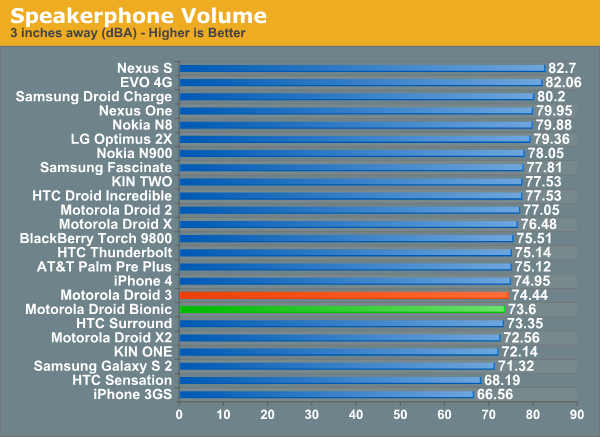


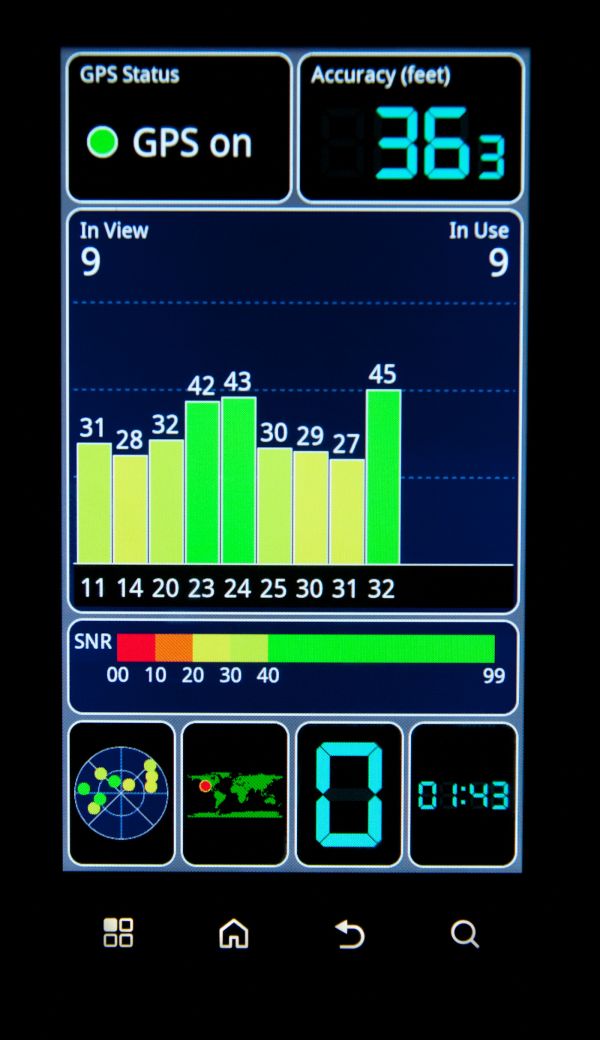








64 Comments
View All Comments
Jamezrp - Tuesday, October 11, 2011 - link
Hmm, that's not good. I'll have to get in touch with Verizon about that. Switching to airplane mode doesn't fix it, only rebooting or going in and out of sleep mode does.I have read some reviews that have claimed similar issues though. I'll keep my eyes open and report back in.
secretmanofagent - Tuesday, October 11, 2011 - link
I'd get it replaced, I'm seeing the same issues and I'm having mine replaced.toomany - Friday, October 14, 2011 - link
I had this phone for 3 weeks and ended up returning it. It was great for about a week and half then the problems began.Let me start by acknowledging that I may have had a lemon.
The very first trouble I had was when the phone did not get any data connection or send texts without any indication one day. The status bar up top showed the 4G icon so it took me until the afternoon to realize this. A reboot fixed this issue. Since then, on at least 2-3 occasions, the touch-screen would not respond or not turn on. I've had to pull the battery out twice. Then let me talk about the back button which annoyed me on several occasions, it just takes you back to whatever was on the screen before. For example, if I'm on the browser, then switch over to maps for a sec to find directions or a store, then switch back over to the browser, hitting the back button should go to the previous page. No, it'll take you back to your map (and there is no back on the orig browser). You'll eventually run into situations where this causes you to restart an app and lose progress.
Lemon or not, I'm not taking any chances when I can be stuck with it for the next 2 years. Also, DON'T BUY VERIZON AT RADIOSHACK!!! THEY GET HORRIBLE TRAINING, TAKES FOREVER, SCREWS YOU, THEN TRIES TO TELL YOU IT'S YOUR FAULT.
corymcnutt - Saturday, October 15, 2011 - link
"Other quirks include the awful shortcut-adding method, no settings in the drop-down menu, and a few more which escape me because it's late. On my model it even reads only 8GB of onboard memory, plus the 16GB card. The more I investigate, the more I think my model may be slightly defective...""Awful shortcut adding method?" This is my first Android (coming from BB) and I think it is easy to get shortcuts/apps/widgets to where you want them. Your memory is correct...that has been discussed at length...the on-board memory still gives you PLENTY of room for apps and the 16GB card will store all of you pictures, music etc..
sandtrap94 - Saturday, October 15, 2011 - link
I've had the exact same issues with my phone. I lose the data connection on occasion and only restarting the phone seems to work. Per the company it is not unheard of but it shouldn't happen frequently. If it does they want to know about it.lemmo - Tuesday, October 11, 2011 - link
Thanks for the review. You say you're still working with Francois to build out your audio testing suite. Will you be doing a review that compares the audio quality between smartphones? I can't find this info anywhere.It's a shame that audio quality is a let-down for this phone, and the Galaxy S2. I'm waiting for the reviews of the new iPhone and Nexus Prime just to see if their audio quality is better...
Brian Klug - Tuesday, October 11, 2011 - link
Yeah we're absolutely still working on a standardized testing methodology for sound - the thing to standardize here is the audio card (which we both have the same of - ASUS), a Y cable plus load headsets (testing unloaded isn't really meaningful), and the software.Unfortunately the Bionic is already so bad that really tests would just tell you all of that again. Listening to the Bionic and then to my Nexus S with voodoo sound - the difference is shocking.
-Brian
Sea Shadow - Tuesday, October 11, 2011 - link
It's late and I'm about to retire for the evening, but I thought I would take the time to log in and say thank you for a thorough review.For me Anandtech is one of the last bastions of lengthy reviews as more and more sites slip into lots of pictures and glossing over the gritty details. I enjoyed the review and especially so the details about battery chemistry and the RGBW displays.
Only thing you may want to double check is the listed order of the phones on display at CES. I understand one is left to right and the other is right to left, but the paragraph in the article seems to have the LG revolution and Samsung Charge flipped. Other than that, spot on job and thank you for a great read.
Brian Klug - Tuesday, October 11, 2011 - link
OOps, very good catch! Should be fixed momentarily! Thanks!-Brian
MGSsancho - Tuesday, October 11, 2011 - link
Does it have a locked bootloader like the Droid 2? If so it is a deal breaker for me. Other than that, all I personally look for in a review is the screen (all attributes,) Picture quality, time it takes from button depress to ability to actually take a picture, and battery life. Keep up the good reviews